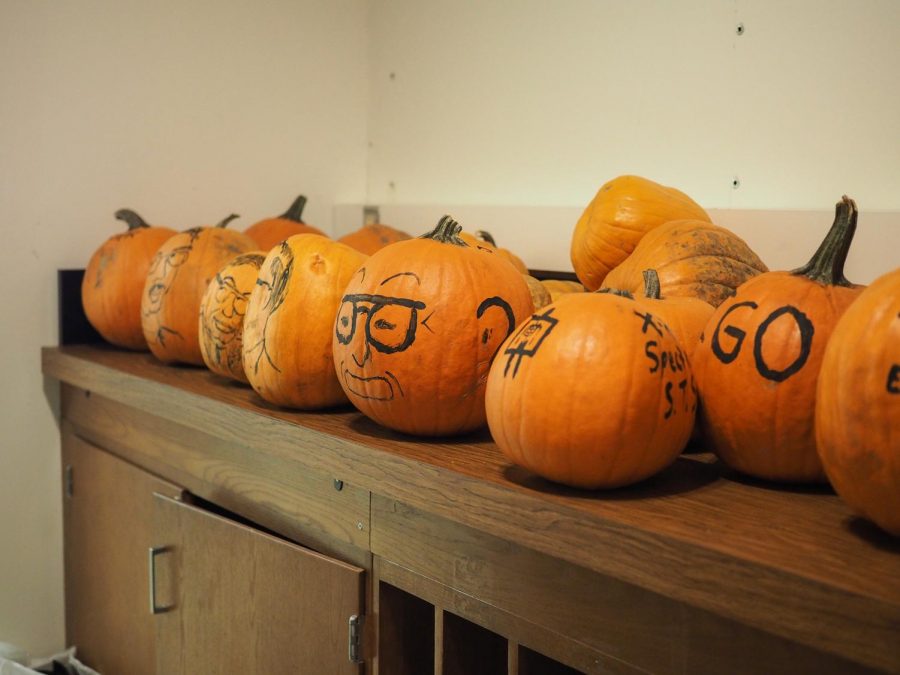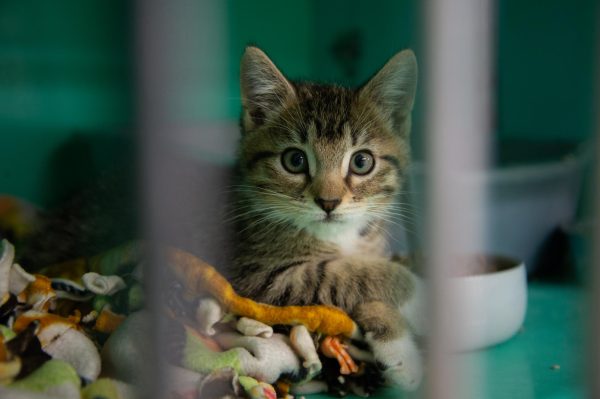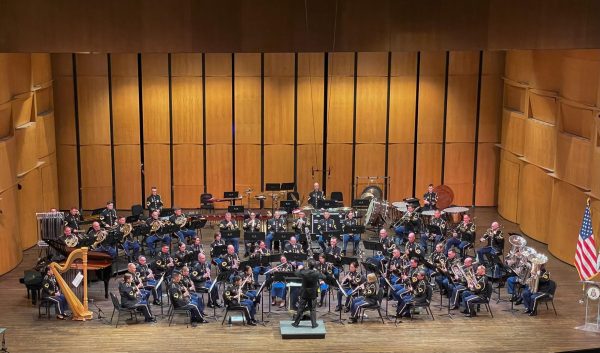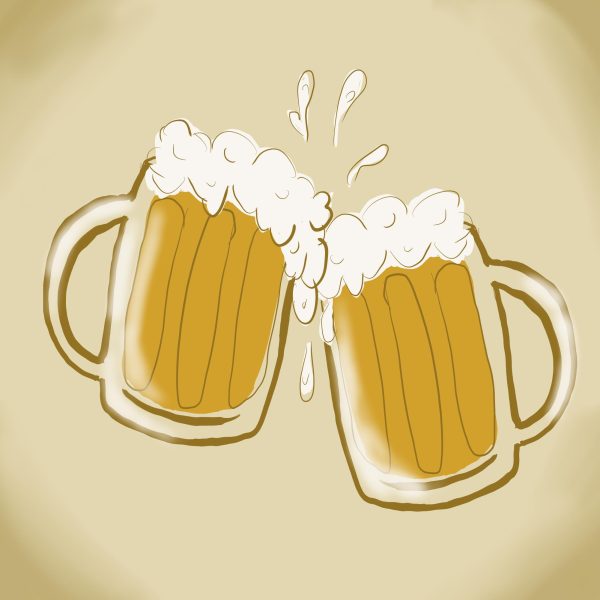Annual pumpkin drop teaches science for all ages
Physics and Astronomy Club host 15th annual event for Dad’s Weekend
Physics and Astronomy club members showcase the science behind gravity’s affects to object by droping pumpkins from the 12th floor of the Webster buidling on Saturday morning.
November 18, 2019
The 15th Annual Pumpkin Drop hosted by the Physics and Astronomy Club was their biggest outreach event of the year that attracted many attendees of all ages just before Saturday’s football game, the club president said.
This year, with the donations from Dissmores and WSU Organic Farm, about 40 pumpkins were dropped at 11 a.m. from the 12th floor of Webster Hall by club members, said Laura Rosen, physics senior and president of the Physics and Astronomy Club. A kit was prepared with the help of Nicholas Cerruti, who has his doctorate in physics and the club advisor, to provide attendees with information on the science behind the pumpkin drop.
It is a tradition for the club to organize this event on Dad’s weekends. Because the pumpkin season is ending, this fruit is the preferable choice for the event, Rosen said. Starting with only 20 pumpkins dropped, the Physics and Astronomy Club rapidly gained public attention and interest through the years. The attendees could be anyone from every walk of life who were interested in science or curious about the event.
“It’s a really cool opportunity to show off Webster Hall. A lot of people just see it a really tall, ugly concrete brick [Building] but it’s really charming and it’s super interesting,” said Emily Mock, physics junior and secretary of the Physics and Astronomy Club.
The 15th Annual Pumpkin Drop began at 9 a.m. with scientific demonstrations, like liquid nitrogen. Attendees could either enjoy pumpkin pies and coffee or get involved in small physics experiments. There were pumpkins available for optional decoration. The attendees could also bring their own painted pumpkins and see them dropped, Rosen said. The club members dropped one pumpkin at a time.
There were available seats for the attendees on the courtyard, Mock said. It was important to keep the attendees far enough from the dropping area.
She said the highlight of the event was the liquid nitrogen pumpkins drops. The liquid nitrogen made the pumpkins cold and steaming. When they touched the ground, the steam would come out from the broken pieces.
It was a scary experience for the club members because they had to lean their heads and arms out of an opened window to drop the pumpkins, Mock said. It was also the most anticipated activity of the club for its members.
“This is my last year here because I’m a senior. I would definitely […] drop at least one,” Rosen said.
As soon as the dropping activity ended, the attendees were able to experience the laser maze hosted by Graduate Physics Club, said Kartik Krishnan Sreedhar, physics fourth-year Ph.D. student and the club president. Whenever the players touched the lasers, the sensors would make an alert sound.
The Physics and Astronomy Club is hosting the egg drop on Mom’s weekend, Mock said. It’s a competition where egg vessels will be dropped in vessels built to try and protect the egg from breaking.
The Physics and Astronomy club meets at 5:30 p.m. every Monday on the 12 floors in Webster hall’s faculty lounge.





















